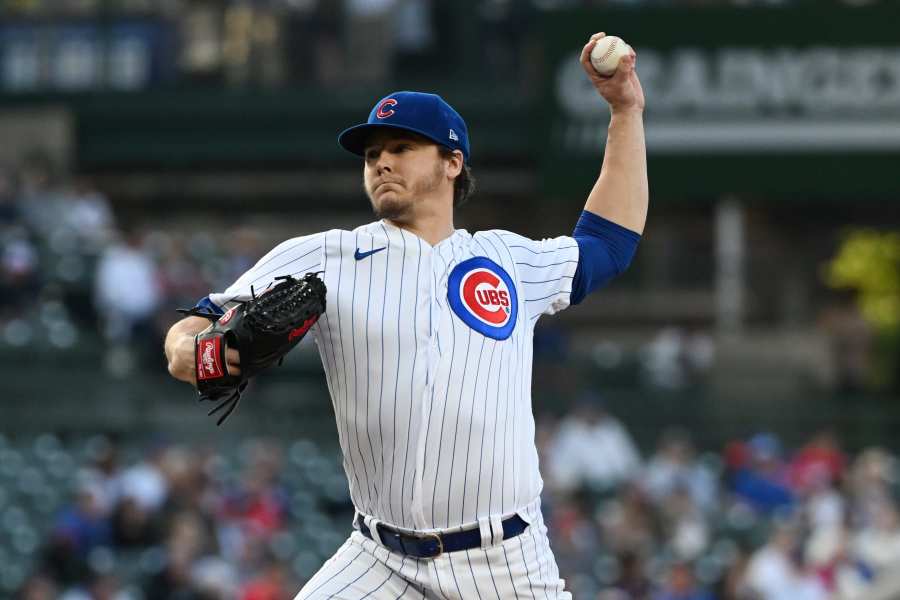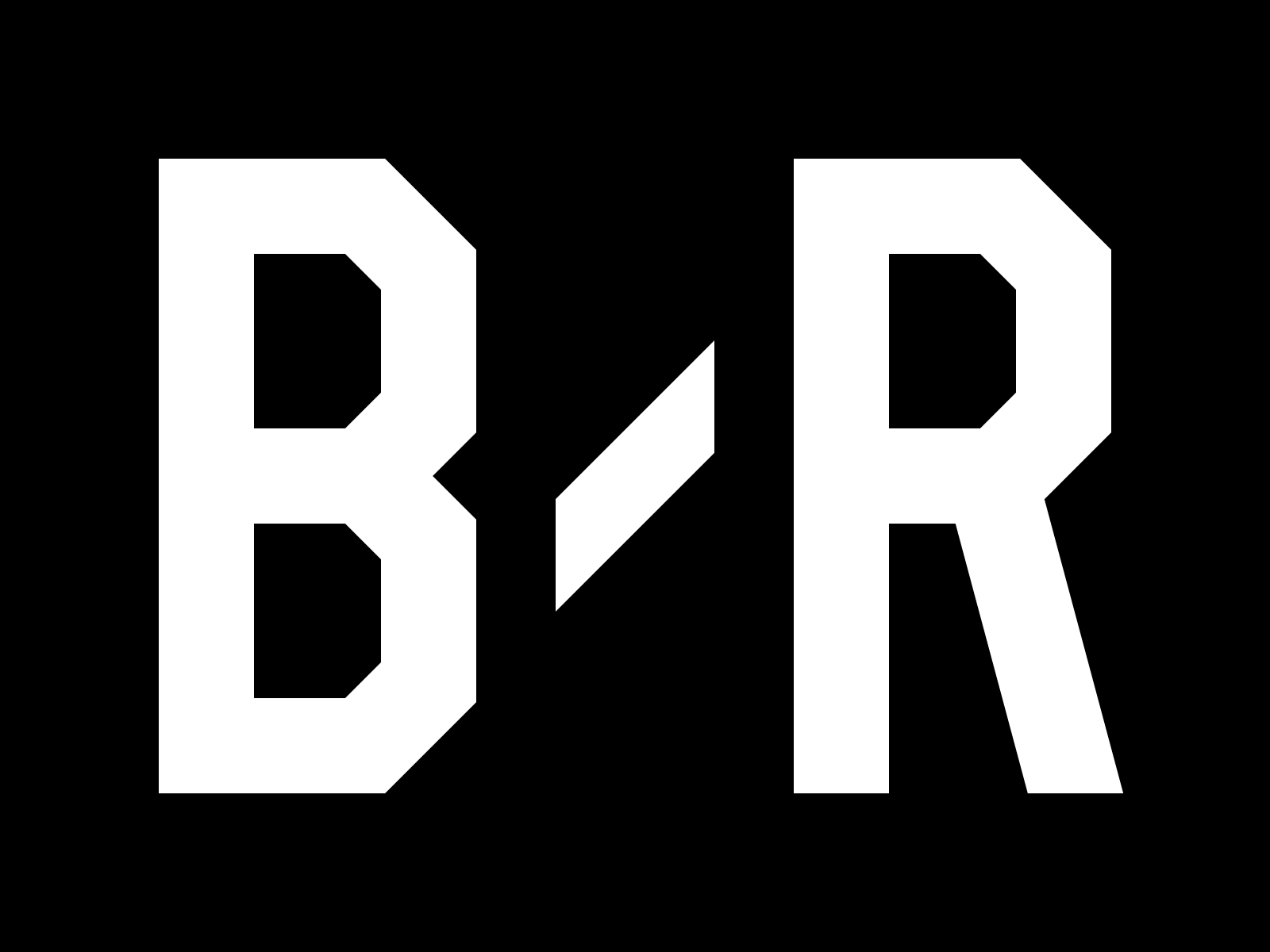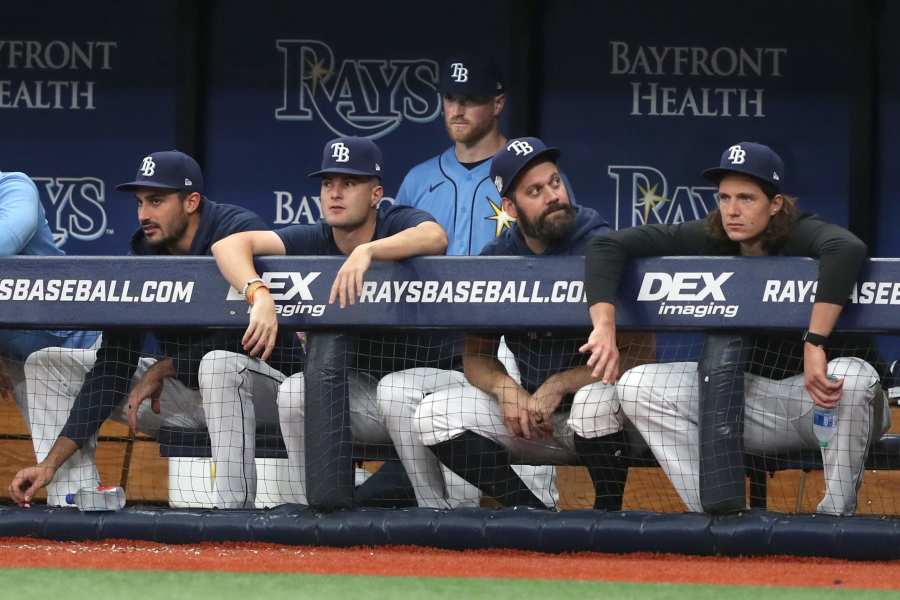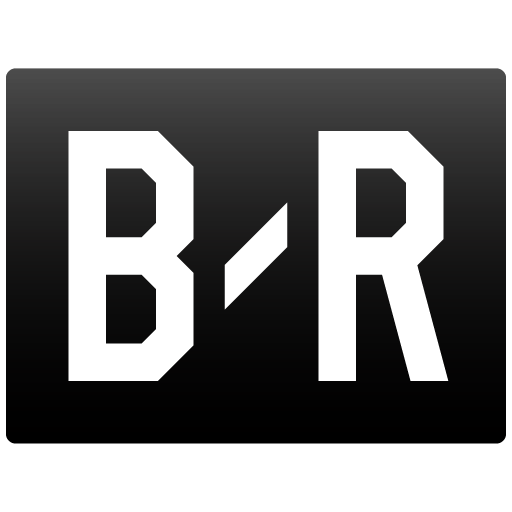Which MLB team does the best job developing pitching talent?
It's a simple question, but finding an answer is not so easy, especially when you consider the volatile nature of most pitchers on a yearly basis outside of top-of-the-rotation starters and elite closers.
Earlier this year, we published articles looking at which MLB teams have the most homegrown talent and which teams do the best job uncovering impact talent on the international market. However, it's not always the organization that a player starts his pro career playing for that unlocks his full potential.
Right-hander Jason Adam was a fifth-round pick by the Kansas City Royals in 2010, and he spent time with the Minnesota Twins, San Diego Padres, Royals again, Toronto Blue Jays and Chicago Cubs before hitting the open market prior to the 2022 season with a 4.71 ERA in 79 career appearances in the majors.
The Tampa Bay Rays signed him to a one-year, $900,000 split contract and he promptly posted a 1.56 ERA, 0.76 WHIP and 10.7 K/9 with 2.7 WAR in 67 appearances. The Royals can't take credit for Adam developing into a bullpen ace simply because they drafted him. Instead, it was clearly the Rays who helped take his game to another level.
With that example in mind, I set out to identify which organizations do the best job developing their pitching talent.
To do that, I sorted every active pitcher who has ever had a 2-WAR season by the team they played for when producing at that level for the first time. From there, a basic scoring system was applied, awarding three points for Cy Young winners, two points for All-Stars and one point for everyone else. That method produced a preliminary ranking.
From there, things were subjectively tweaked based on recent organizational trends, and teams were sorted into tiered categories to provide a lead up to our ranking of the five teams that are best at developing pitching.
Off we go!
Pitching Development Is a Weakness

Boston Red Sox
The Red Sox have squeezed more than expected out of Nick Pivetta, John Schreiber and Garrett Whitlock since acquiring them from other organizations. They also helped develop Eduardo Rodriguez from a top prospect in the Baltimore organization into a quality MLB starter. Still, the pitching staff has been the weakness of the roster for some time now.
Chicago Cubs
The Cubs won a World Series with a roster built around homegrown position player talent and outside additions to the pitching staff, signing Jon Lester and John Lackey while trading for Jake Arrieta. They deserve props for developing Kyle Hendricks into a rotation staple, and left-hander Justin Steele could be on his way to becoming the club's best homegrown starter since Carlos Zambrano.
Colorado Rockies
The Rockies developed the trio of Kyle Freeland, German Marquez and Antonio Senzatela, who have all been above-average rotation options at various points. They also turned Jon Gray into a good enough pitcher for him to earn a four-year, $56 million deal when he departed in free agency. However, they have had considerably less success drafting and developing arms in the years since those guys joined the organization.
Los Angeles Angels
Pitching has been a long-standing issue for the Angels, and while things are starting to turn around, the only real pitchers they can take credit for are Patrick Sandoval and Reid Detmers, especially considering Shohei Ohtani was already a well-established star in Japan before he joined the roster. The fact that they drafted a pitcher with all 20 picks during the 2021 draft—the first team to ever do that—speaks volumes to what an issue it has been.
Texas Rangers
Martin Pérez is really the only notable starting pitcher the Rangers have developed among active starters, and it's worth noting that he spent three seasons pitching elsewhere before returning to the team for a breakout 2022 campaign. Resurrecting the career of 2004 No. 1 overall pick and former position player Matt Bush is at least worth a tip of the cap.
Trending Down
Detroit Tigers
Once upon a time, the Tigers would have ranked No. 1 on this list with Justin Verlander, Max Scherzer and Rick Porcello all developing into impact starters during their time with the team, while Doug Fister also found a new level of success upon joining Detroit. However, the stalled development of Casey Mize, Matt Manning and others has derailed their current rebuild.
New York Mets
The trio of Jacob deGrom, Noah Syndergaard and Matt Harvey were all developed by the Mets, with deGrom and Harvey also drafted by the organization, but they have become increasingly reliant on outside additions that first found success elsewhere. The top five prospects in the organization right now are all position players. They are leaning heavily on aging stars like Justin Verlander and Max Scherzer right now with no clear next wave of arms in the pipeline.
San Diego Padres
MacKenzie Gore (26), Michel Báez (28), Cal Quantrill (52) and Adrian Morejón (66) all earned a spot on the Baseball America Top 100 prospect list prior to the 2018 season, and it looked like the Padres would have a young, homegrown rotation to build around. Instead, those pitchers either failed to develop or ended up as early trade chips, and the team's rotation is now largely built with outside additions, including Yu Darvish, Joe Musgrove and Blake Snell.
San Francisco Giants
The Giants rattled off three World Series titles in a span of five years during the 2010s on the strength of a rotation filled with pitchers they developed in-house, including Tim Lincecum, Matt Cain, Madison Bumgarner, Jonathan Sánchez, Sergio Romo, Santiago Casilla and Brian Wilson. These days, Logan Webb and Camilo Doval are the only real standout arms across baseball that they can take credit for developing into impact contributors.
St. Louis Cardinals
Not so long ago, Adam Wainwright, Lance Lynn, Michael Wacha, Joe Kelly, Shelby Miller and Trevor Rosenthal could all be pointed to as impact pitchers who were developed by the Cardinals organization. Guys like Jack Flaherty, Luke Weaver, Dakota Hudson and Alex Reyes were expected to be the next wave of arms to come out of that pipeline, but things have not gone as hoped.
Trending Up
Arizona Diamondbacks
Zac Gallen was traded from Miami to Arizona midway through a breakout season in 2019, so it's a coin toss as far as who gets credit for his development. Even if you pencil him into the Marlins column, the D-backs are still a staff on the rise with prospects Brandon Pfaadt, Drey Jameson, Ryne Nelson and Tommy Henry representing a bright future for the starting rotation.
Baltimore Orioles
The Orioles have done an excellent job developing Tyler Wells, Dean Kremer and Kyle Bradish into productive members of the starting rotation after none of them ever appeared on leaguewide Top 100 prospect lists. Grayson Rodriguez still checks all the boxes to be a future ace. And don't forget about former All-Star John Means who should be ready to rejoin the team by midseason as he continues his recovery from Tommy John surgery.
Pittsburgh Pirates
After taking his lumps the past few seasons, Mitch Keller has been one of the breakout stars of the 2023 season thus far, going 5-1 with a 2.38 ERA, 1.02 WHIP and 69 strikeouts in 56.2 innings. Roansy Contreras, Johan Oviedo and Luis Ortiz also appear to have a bright future, while prospects Mike Burrows and Quinn Priester could also see the majors before the season is over.
Seattle Mariners
The Mariners spent big to add Robbie Ray in free agency and to extend Luis Castillo after acquiring him from the Cincinnati Reds, but they have also developed Marco Gonzales into a rotation staple and have an up-and-coming core of pitchers led by George Kirby, Logan Gilbert and Bryce Miller. They also deserve a ton of credit for their ability to cobble together a bullpen, coaxing breakout performances from guys like Casey Sadler, Drew Steckenrider and others late in their careers.
Washington Nationals
The Nationals have added a ton of young talent the last few seasons while dismantling their roster on the trade market, and young starters Josiah Gray and MacKenzie Gore have provided the best early returns of any of their trade pickups. Consider this a TBD slot in the rankings, as a lot hinges on the continued development of their young arms.
Middle of the Pack
Kansas City Royals
The Royals have had some mixed success in recent years with pitching development, and the jury is still out on their 2018 draft haul when they took Brady Singer (18), Jackson Kowar (33), Daniel Lynch (34) and Kris Bubic (40) all inside the first 40 picks. Reliever Scott Barlow and Rule 5 success story Brad Keller are among their notable success stories.
Minnesota Twins
The Twins began the year with a rotation made up entirely of players they acquired via trade, and outside of Joe Ryan, who made his MLB debut shortly after being acquired from the Tampa Bay Rays, they can't claim credit for the development of any of them. However, they did turn José Berríos into a pitcher worthy of a nine-figure extension, while also acquiring flame-throwing closer Jhoan Duran when he was still a minor league starter in the D-backs organization.
Oakland Athletics
The Athletics have done a nice job maximizing the potential of pitchers of the years, acquiring guys like Frankie Montas, Sean Manaea, Chris Bassitt and Cole Irvin via trade and turning them into attractive trade chips. They also turned Liam Hendriks from a decent middle reliever into one of the most dominant closers in baseball. The cupboard is a bit bare at this moment, though.
Philadelphia Phillies
The Phillies developed Aaron Nola into a frontline starter and have done a nice job utilizing Ranger Suárez in a variety of different roles on the staff. However, they have had a tough time building a quality bullpen since the days of Brad Lidge and Ryan Madson, and knowing when to pivot guys to that role and change their developmental path is an important part of building a staff.
Toronto Blue Jays
The Blue Jays once had a nice collection of pitchers they could claim developmental credit for, led by Marcus Stroman, Aaron Sanchez and Roberto Osuna. They still have a homegrown frontline arm in Alek Manoah, but they have been forced to invest a ton of money in the rest of their rotation due in part to their lack of in-house development. Things are moving in the right direction though with top prospect Ricky Tiedemann quickly rising the ranks.
Nos. 10-6
10. Chicago White Sox
Dylan Cease and Michael Kopech were both acquired as low-level prospects, so the White Sox can take credit for an important chunk of their development. They also helped Lucas Giolito reach his full potential after his prospect stock steadily declined during his time in the Nationals organization. Will 2022 first-round pick Noah Schultz be their next developmental win?
9. New York Yankees
This season might not be the best example of pitchers the Yankees organization developed making an impact, but they've turned guys like Chad Green (11th round pick), Jonathan Loaisiga (released by Giants in 2015) and Nestor Cortes (acquired for PTBNL in 2019) into key contributors in recent years. They also got more out of Jordan Montgomery than was expected before he was traded to St. Louis, and guys like Luis Severino and Domingo German also belong in the Yankees developmental column.
8. Cincinnati Reds
The Cincinnati Reds would have a stacked rotation if the front office were willing to spend the money necessary to keep the guys they developed in-house. Luis Castillo and Tyler Mahle were both flipped for prospects last summer, just as young starters Hunter Green, Nick Lodolo and Graham Ashcraft were breaking into the majors. They also turned Aroldis Chapman and Raisel Iglesias into elite closers, and they are well on their way to doing the same with Alexis Díaz.
7. Atlanta Braves
While not all of their high-ceiling pitching prospects have panned out, the Braves can point to Max Fried, Kyle Wright, Spencer Strider and Bryce Elder as success stories, and they have done a good job selling high on some of those guys that didn't develop into impact arms to address other roster needs. Will Mike Soroka shake off the rust and make an impact before the 2023 season is over?
6. Miami Marlins
The Marlins acquired Sandy Alcantara and Zac Gallen as prospects in the deal that sent Marcell Ozuna to the St. Louis Cardinals, so they deserve at least partial credit for the development of both of those frontline starters. They played an even bigger role in shaping Pablo López who was pitching at High-A when he was acquired from Seattle in 2017. Left-hander Jesús Luzardo broke out after coming over in a trade with Oakland, but it's worth questioning whether they mishandled Sixto Sanchez and Max Meyer.
5. Los Angeles Dodgers
2+ WAR Pitchers They Developed
SP Clayton Kershaw, SP Julio Urías, SP Walker Buehler, SP Tony Gonsolin, SP/RP Ross Stripling, RP Kenley Jansen, RP Evan Phillips
The resume that Clayton Kershaw has built since the Los Angeles Dodgers selected him with the No. 7 overall pick in the 2006 draft is enough on its own to elevate the team above some clubs on this list.
That said, a more impressive feather in their cap is the fantastic job they did easing Julio Urías as a young phenom. He made his MLB debut at the age of 19 and flashed elite stuff from the get-go, but they kept him to a strict innings limit for the first few years of his career, utilizing him out of the bullpen at times as well, before finally turning him loose. In a less patient organization, he might have been ruined.
Beyond those two, Dustin May (third round) and Tony Gonsolin (ninth round) have both outperformed their draft position, Evan Phillips have developed into a bullpen ace since coming to Los Angeles, and Ross Stripling was masterfully used in a swingman role
Oh yeah, they also had the foresight to move Kenley Jansen from catcher to the mound.
4. Milwaukee Brewers
2+ WAR Pitchers They Developed
SP Corbin Burnes, SP Brandon Woodruff, SP Freddy Peralta, SP Eric Lauer, SP Adrian Houser, SP Zach Davies, SP Jordan Lyles, SP/RP Chase Anderson, SP/RP Jimmy Nelson, SP/RP Wily Peralta, RP Josh Hader, RP Devin Williams
The Milwaukee Brewers have built one of the best starting rotations in baseball with homegrown aces Corbin Burnes and Brandon Woodruff leading the way. Fellow All-Star Freddy Peralta was acquired from Seattle before he pitched above rookie ball, while Eric Lauer and Adrian Houser were part of larger trade packages.
In the bullpen, Josh Hader was a stuff-over-production starting pitching prospect when he was acquired from the Houston Astros and turned into one of baseball's most dominant closers. Devin Williams flamed out as a starter in the minors but reinvented himself as a lights out bullpen ace.
For an organization dealing with financial limitations, the ability to develop their own homegrown pitching and low-cost acquisitions with significant club control has been integral to their success.
3. Cleveland Guardians
2+ WAR Pitchers They Developed
SP Corey Kluber, SP Carlos Carrasco, SP Mike Clevinger, SP Shane Bieber, SP Triston McKenzie, SP Cal Quantrill, SP Aaron Civale, SP Zach Plesac, RP Emmanuel Clase
The Cleveland Guardians join the Detroit Tigers as the only teams that can take credit for the development of two Cy Young winners, with Corey Kluber winning a pair after joining the organization as a mid-level prospect and Shane Bieber winning the award in 2020 after exceeding expectations as a fourth-round pick in 2016.
However, unlike the Tigers, the Guardians have continued to successfully churn out pitching talent, and this year is no exception. Injuries have forced them to turn to rookies Logan Allen and Tanner Bibee who both look like potential rotation staples, not mention top prospects Gavin Williams and Daniel Espino.
Cal Quantrill looked like a bust in San Diego before coming to Cleveland and putting the pieces together, Triston McKenzie didn't fill out as hoped physically but has still found MLB success, and even when they traded away Kluber they managed to bring back an impact arm in Emmanuel Clase who they have molded into an elite closer.
2. Houston Astros
2+ WAR Pitchers They Developed
SP Charlie Morton, SP Framber Valdez, SP Cristian Javier, SP Lance McCullers Jr., SP Jose Urquidy, SP Luis García, SP/RP Collin McHugh, RP Ryan Pressly, RP Chris Devenski, RP Ryne Stanek
Yes, the Houston Astros have gotten a nice boost from established veteran additions like Justin Verlander, Gerrit Cole and Zack Greinke during their recent run of success, but they also deserve a ton of credit for their ability to develop pitching.
Charlie Morton was a middling back-end starter with a 4.54 ERA and 6.3 K/9 in 893 career innings when he joined the Astros on a two-year, $14 million deal in 2017 at the age of 33. He overhauled his approach to attacking hitters and went 29-10 with a 3.36 ERA and 364 strikeouts in 313.2 innings during his time in Houston and came out the other side an in-demand free agent.
Cristian Javier, Framber Valdez, Jose Urquidy and Luis García all rose the minor league ranks with little fan fare as far as leaguewide prospect lists are concerned, only to form the backbone of the team's current rotation.
Collin McHugh was claimed off waivers from Colorado, Chris Devenski was acquired in the deal that sent Brett Myers to the Chicago White Sox, and Ryan Pressly went from decent middle reliever to lights out closer the second he put on an Astros jersey.
1. Tampa Bay Rays
2+ WAR Pitchers They Developed
SP Blake Snell, SP Alex Cobb, SP Matt Moore, SP Jake Odorizzi, SP Shane McClanahan, SP Tyler Glasnow, SP Drew Rasmussen, SP Jeffrey Springs, SP/RP Yonny Chirinos, RP Alex Colome, RP Andrew Kittredge, RP Jason Adam, RP Emilio Pagan,
The question in my mind that launched this article was whether the Tampa Bay Rays were really that much better than everyone else around the league when it comes to not only developing their own homegrown pitching, but also finding diamonds in the rough from other organizations.
The answer is a resounding yes.
The above list focuses on players who had a 2-WAR season while breaking out in Tampa Bay, but it doesn't even include guys like Pete Fairbanks, Colin Poche, Jalen Beeks and several others who were cast off by other organizations only to emerge as low-cost contributors out of a bullpen that is consistently among the best in baseball.
It also doesn't mention Taj Bradley, who began the year as one of baseball's top pitching prospects and has the potential to be the team's next homegrown ace.
Pitching has been the lifeblood of the Tampa Bay organization for years now, and outside of signing Charlie Morton and Zach Eflin to relatively expensive deals in free agency, they have consistently built their staffs almost entirely with players they developed.
A tip of the cap to the Rays organization. No one does it better.
All stats courtesy of Baseball Reference.



Read 85 Comments
Download the app for comments Get the B/R app to join the conversation